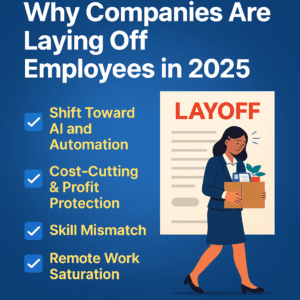Choosing the right technology for your project is a crucial task. It decides the success of your project significantly. Now a days it is refer as combination of programming language, frameworks, libraries used for development and deployement, termed as tech stack.
What is technology stack?
A Technology stack, also called as a Tech stack, is a combination of different software technologies and tools used to develop and operate a web application, software, or system. These technologies work together to provide the necessary infrastructure, functionality, and user experience for a digital product. A tech stack typically consists of several layers, each serving a specific purpose within the development process.
The main components of a technology stack are:
There are mainly four component that refers to the technology stack, are front-end, backend, database and web server.
Lets check the different layers that constitute a tech stack.
- Operating System: The foundational layer of the stack, which includes the underlying software that manages hardware resources and provides a platform for higher-level applications.
- Programming Languages: The languages used to write the code of your application. Different languages are chosen based on the project’s requirements and the team’s expertise.
- Frameworks and Libraries: These are pre-built sets of code and tools that make development faster and more efficient. They provide structures and functionalities that developers can use without starting from scratch.
- Databases: The technology used to store and manage data for your application. There are various types of databases, including relational databases (SQL), NoSQL databases, and in-memory databases.
- Web Servers or Runtime Environments: These handle the execution of web applications and the communication between the user’s browser and the backend.
- Frontend Development: The technologies used to create the user interface and user experience of the application that users interact with directly. This includes HTML, CSS, and JavaScript, as well as frontend frameworks like React, Angular, and Vue.
- Backend Development: The server-side technologies responsible for processing requests from the frontend, handling data, and performing other backend operations. Common backend languages include Python, Java, Ruby, PHP, and JavaScript (Node.js).
- APIs (Application Programming Interfaces): APIs allow different software components to communicate and interact with each other. They enable third-party services and applications to integrate with your application.
- Version Control Systems: These tools, such as Git, help manage and track changes in the codebase and enable collaboration among developers.
- Deployment and Hosting: Tools and services used to deploy your application to servers or cloud platforms, making it accessible to users over the internet.
The specific technologies chosen for each layer of the stack depend on factors like project requirements, project scalability, platform, and the expertise of the team. A well-chosen tech stack can contribute to efficient development, improved performance, and a better user experience.
Below are some tech stacks that were widely used and considered strong choices for software development.
- MEAN Stack:
- MongoDB (Database)
- Express.js (Backend framework)
- Angular (Frontend framework)
- Node.js (Runtime environment)
- MERN Stack:
- MongoDB (Database)
- Express.js (Backend framework)
- React (Frontend library)
- Node.js (Runtime environment)
- LAMP Stack:
- Linux (Operating system)
- Apache (Web server)
- MySQL (Database)
- PHP (Programming language)
- Python/Django Stack:
- Python (Programming language)
- Django (Backend framework)
- Various frontend technologies (e.g., React, Angular, Vue)
- Ruby on Rails Stack:
- Ruby (Programming language)
- Ruby on Rails (Backend framework)
- JavaScript (Frontend)
- Java Spring Stack:
- Java (Programming language)
- Spring Framework (Backend framework)
- JavaScript frameworks (e.g., React, Angular) for the frontend
- ASP.NET Stack:
- C# (Programming language)
- ASP.NET (Backend framework)
- JavaScript frameworks (e.g., React, Angular) for the frontend
- Serverless Stack:
- AWS Lambda, Azure Functions, Google Cloud Functions (Serverless compute)
- API Gateway (Backend management)
- NoSQL or managed database services
- Frontend of your choice (React, Vue, Angular)
- MEVN Stack:
- MongoDB (Database)
- Express.js (Backend framework)
- Vue.JS (Frontend library)
- Node.js (Runtime environment)
- Flutter Stack:
- An open-source mobile application development framework.
Lets Explain Each Technology Stack one by one.
MEAN Stack is a popular tech stack used for developing dynamic web applications. The acronym “MEAN” stands for the combination of four technologies: MongoDB, Express.js, Angular, and Node.js. This stack provides an end-to-end solution for building robust and modern web applications.
Here’s a brief overview of each component in the MEAN Stack:
- MongoDB: MongoDB is a NoSQL database that stores data in a flexible, document-oriented format using JSON-like documents. It is designed for scalability and flexibility, making it well-suited for applications that handle large amounts of data and require quick access to it.
- Express.js: Express.js is a minimal and flexible web application framework for Node.js. It simplifies the process of building web applications and APIs by providing features such as routing, middleware support, and template rendering. Express.js acts as the backend framework in the MEAN Stack.
- Angular: Angular is a frontend framework developed by Google for building dynamic, single-page web applications. It provides a structured way to manage the user interface, data binding, and interactions between components. Angular’s powerful features make it ideal for creating complex and responsive user interfaces.
- Node.js: Node.js is a runtime environment that allows developers to run JavaScript on the server side. It’s built on the V8 JavaScript engine and provides an event-driven, non-blocking architecture that makes it well-suited for building scalable and real-time applications.
When combined, these technologies form a full-stack JavaScript solution that enables developers to create feature-rich applications with consistent code throughout the entire development process. The MEAN Stack’s use of JavaScript for both frontend and backend development reduces the need to switch between languages, improving developer productivity and collaboration.
It’s important to note that while the MEAN Stack is a well-known option, technology landscapes evolve quickly. Some variations and alternatives to the MEAN Stack have also gained popularity, such as the MERN Stack (substituting React for Angular) or MEVN Stack (substituting Vue.js for Angular). As of my last update in September 2021, the MEAN Stack was widely used, but I recommend checking more recent sources to see if there have been any significant changes or new stacks that have gained prominence.
The MERN Stack is another popular tech stack used for developing modern web applications. Similar to the MEAN Stack, the MERN Stack consists of a combination of technologies, but with a different frontend library: MongoDB, Express.js, React, and Node.js.
Here’s a breakdown of each component in the MERN Stack:
- MongoDB: MongoDB remains the same in both the MEAN and MERN stacks. It’s a NoSQL database that stores data in a flexible, JSON-like format. MongoDB’s scalability and flexibility make it suitable for various types of applications.
- Express.js: Express.js is used for building the backend of the application, just as it is in the MEAN Stack. It’s a lightweight and flexible web application framework for Node.js that simplifies tasks like routing, middleware management, and API creation.
- React: React is a JavaScript library developed by Facebook for building user interfaces. It’s a popular choice for creating dynamic, single-page applications (SPAs) and offers a component-based architecture for building reusable UI components. React is particularly known for its virtual DOM and efficient rendering process.
- Node.js: Similar to the MEAN Stack, Node.js serves as the runtime environment for the MERN Stack. It allows developers to execute JavaScript code on the server side, making it possible to build scalable and high-performance applications.
The MERN Stack’s use of React for the frontend offers several advantages, such as a highly interactive user interface, efficient data binding, and a vibrant ecosystem of third-party libraries and tools. React’s component-based approach and virtual DOM help improve the development process and enhance user experience.
As with any tech stack, it’s important to consider the specific requirements of your project, your team’s expertise, and the goals of your application when choosing between the MEAN Stack and the MERN Stack. Both stacks offer powerful tools and technologies, and the choice between them may depend on your familiarity with the different frontend libraries (Angular vs. React) and your preferences for building user interfaces.
The LAMP Stack is a classic and well-established tech stack that has been widely used for building web applications. The acronym “LAMP” stands for the combination of four open-source technologies: Linux, Apache, MySQL, and PHP. This stack provides a comprehensive solution for creating dynamic websites and web applications.
Here’s a breakdown of each component in the LAMP Stack:
- Linux: Linux is an open-source operating system that serves as the foundation of the LAMP Stack. It provides a stable and secure environment for hosting web applications. Various distributions of Linux, such as Ubuntu, CentOS, and Debian, can be used as the operating system.
- Apache: Apache is a popular web server software that handles HTTP requests from clients (such as web browsers) and serves web pages to them. It’s highly customizable and configurable, making it suitable for hosting a wide range of web applications.
- MySQL: MySQL is a widely used open-source relational database management system (RDBMS). It stores and manages structured data and provides tools for querying, manipulating, and retrieving information from databases.
- PHP: PHP is a server-side scripting language specifically designed for web development. It’s embedded within HTML code and executed on the server to generate dynamic web content. PHP is used to create the logic and functionality of web applications.
The LAMP Stack’s components work together to create a full-stack environment for developing and deploying web applications. It’s worth noting that while LAMP has been a popular choice for a long time, the technology landscape has evolved, and alternative stacks have emerged to meet different needs. For example, you might encounter variations like the LEMP Stack, which substitutes Nginx for Apache and offers improved performance for certain use cases.
The LAMP Stack’s simplicity, affordability (as it relies on open-source components), and its long-standing presence in the industry have contributed to its popularity, especially for small to medium-sized web applications. However, as with any tech stack, it’s important to consider factors such as project requirements, scalability needs, and your team’s expertise when deciding if the LAMP Stack is the right choice for your project.
The Python/Django Stack is a powerful combination for building web applications. It involves using the Python programming language for backend development and the Django web framework to streamline the development process. Here’s a breakdown of each component:
- Python: Python is a versatile and widely-used programming language known for its simplicity and readability. It’s used extensively in web development, data science, machine learning, and more. Python’s elegant syntax and extensive libraries make it a popular choice for backend development.
- Django: Django is a high-level Python web framework that simplifies the process of building complex web applications. It follows the “batteries included” philosophy, providing a wide range of built-in features and tools that help developers focus on building functionality rather than reinventing the wheel. Some key features of Django include an ORM (Object-Relational Mapping) system, URL routing, form handling, authentication, and more.
The Python/Django Stack offers several advantages:
- Rapid Development: Django’s built-in features and conventions allow developers to create applications more efficiently, reducing the time needed for repetitive tasks.
- Security: Django includes security mechanisms like built-in protection against common web vulnerabilities, helping developers create more secure applications.
- Scalability: While Django might not be as lightweight as some micro-frameworks, it’s designed for scalability. With proper architecture, Django applications can handle increased traffic and user demand.
- Community and Ecosystem: Both Python and Django have large and active communities, which means plenty of resources, libraries, and plugins are available for solving various challenges.
- ORM and Database Handling: Django’s ORM simplifies database interactions, making it easier to work with databases while abstracting away some of the complexities of SQL queries.
When using the Python/Django Stack, you have the option to pair it with different frontend technologies based on your project’s needs. Common frontend frameworks and libraries like React, Vue.js, or even traditional HTML, CSS, and JavaScript can be integrated with Django to create a full-stack application.
As with any technology stack, the choice between using the Python/Django Stack and others will depend on your project’s requirements, your team’s expertise, and your specific goals. Django is particularly well-suited for projects that prioritize rapid development, maintainability, and security.
The Ruby on Rails (often simply referred to as Rails) Stack is a popular and productive technology stack for building web applications. It revolves around the Ruby programming language and the Ruby on Rails framework. Here’s an overview of each component:
- Ruby: Ruby is a dynamic, object-oriented programming language known for its elegant syntax and developer-friendly design. It emphasizes simplicity and productivity, making it a preferred choice for building web applications quickly and efficiently.
- Ruby on Rails (Rails): Ruby on Rails is a full-stack web framework written in Ruby. It follows the “Convention over Configuration” (CoC) and “Don’t Repeat Yourself” (DRY) principles, which promote efficiency and maintainability by providing sensible defaults and minimizing repetitive code. Rails provides tools and components for handling everything from database interactions to routing and view rendering.
Key features of the Ruby on Rails Stack include:
- Rapid Development: Rails’ focus on convention and automation speeds up development by reducing the amount of code developers need to write.
- MVC Architecture: Rails uses the Model-View-Controller (MVC) architecture to separate application concerns, making code more organized and maintainable.
- ORM (Active Record): Rails comes with an Object-Relational Mapping (ORM) tool called Active Record, which simplifies database interactions by mapping database tables to Ruby objects.
- Scaffolding: Rails provides tools for generating boilerplate code, such as models, views, and controllers, to kick-start the development process.
- Gems: Rails leverages a rich ecosystem of Ruby Gems (packages) to extend its functionality, allowing developers to easily integrate features like authentication, APIs, and more.
- Community and Convention: Rails has a strong community with extensive documentation, tutorials, and resources. Its conventions make it easier for developers to collaborate on projects and understand each other’s code.
When using the Ruby on Rails Stack, you can pair it with frontend technologies like JavaScript frameworks (e.g., React, Vue.js) or traditional HTML, CSS, and JavaScript. This flexibility allows you to create dynamic and engaging user interfaces while leveraging Rails’ backend capabilities.
Ruby on Rails is a great choice for projects where productivity, maintainability, and developer happiness are priorities. As with any tech stack, consider factors such as your project’s requirements, your team’s familiarity with Ruby and Rails, and the overall goals of the application before making your decision.
Flutter, as a UI toolkit and framework for building cross-platform applications, doesn’t fit into the traditional concept of a “stack” like the server-side or full-stack technologies. However, I can provide an overview of the key components and technologies that make up the Flutter ecosystem:
- Dart Programming Language: Flutter uses the Dart programming language, which was developed by Google. Dart is designed to be easy to learn, expressive, and efficient. It’s the primary language for writing code in the Flutter framework.
- Flutter Framework: The Flutter framework provides a comprehensive set of widgets, tools, and APIs for building user interfaces and managing app logic. It uses a reactive programming model to create dynamic and visually appealing UIs.
- Widgets: Widgets are the building blocks of Flutter applications. Everything in Flutter is a widget, including UI elements, layout structures, and even entire app screens. Widgets can be combined to create complex and customizable user interfaces.
- Hot Reload: One of the standout features of Flutter is its hot reload functionality. It allows developers to make changes to their code and see the updates reflected in the app’s UI almost instantly, without losing the app’s state. This accelerates the development and debugging process.
- State Management: Flutter offers various approaches to managing the app’s state, including using built-in stateful and stateless widgets, as well as third-party state management solutions like Provider, Bloc, MobX, and Redux.
- Platform Channels: Flutter allows you to integrate platform-specific functionality using platform channels. This means you can access native features and APIs from iOS and Android using Dart code.
- Flutter Packages: The Flutter community has contributed a wide range of packages and plugins, available on pub.dev, that extend the functionality of Flutter. These packages cover various domains such as networking, data storage, animations, UI components, and more.
- Cross-Platform Development: Flutter enables developers to build applications that work seamlessly across multiple platforms, including iOS, Android, web, and desktop (through projects like “Flutter Desktop”). This significantly reduces development time and maintenance efforts.
- Material Design and Cupertino Style: Flutter supports both Material Design (Android’s design language) and Cupertino (iOS’s design language) styles, allowing you to create native-looking user interfaces on each platform.
- Web and Desktop Support: While initially focused on mobile app development, Flutter has been expanding to support web and desktop platforms, allowing developers to create applications that run in browsers and on desktop operating systems.
In summary, Flutter provides a unified platform for building highly responsive and visually appealing applications across multiple platforms using a single codebase. It’s a versatile framework that’s well-suited for startups, enterprises, and individual developers looking to create modern and performant applications. Your choice to use Flutter will depend on your project’s goals, your team’s familiarity with Dart and Flutter, and the platforms you intend to target.
The Serverless Stack, often referred to as Serverless Computing, is a cloud computing model where developers build and run applications without managing the underlying infrastructure. In a serverless architecture, developers focus on writing code for specific functions or services, and the cloud provider takes care of scaling, provisioning, and managing the servers that execute that code. Here’s an overview of the key components and concepts of the Serverless Stack:
- Functions as a Service (FaaS): At the core of serverless computing are functions, small units of code that perform a specific task or operation. With FaaS, developers write individual functions that are triggered by specific events, such as HTTP requests, database changes, or timers. Each function runs in its own isolated environment.
- Event Triggers: Serverless functions are event-driven, meaning they are triggered by specific events. These events can come from various sources, such as HTTP requests, file uploads, database updates, message queues, and more.
- Statelessness: Serverless functions are stateless, meaning they don’t maintain any internal state between invocations. This makes them inherently scalable because new instances of the function can be created and destroyed as needed.
- Auto-scaling: One of the main advantages of serverless computing is automatic scaling. Cloud providers automatically manage the scaling of function instances based on the incoming workload. You’re only charged for the actual compute resources used during function execution.
- Pay-per-Use Billing: Serverless computing follows a pay-as-you-go billing model. You are charged based on the number of function invocations and the compute resources used during those invocations. This can lead to cost savings compared to traditional provisioning of servers.
- Backend as a Service (BaaS): In addition to functions, serverless platforms often provide Backend as a Service (BaaS) offerings. These services abstract away backend components like databases, storage, authentication, and more, allowing developers to build applications faster without managing the infrastructure.
- Vendor Lock-In: While serverless computing offers convenience, it can result in vendor lock-in, as each cloud provider has its own serverless offerings with unique features and limitations.
- Cold Starts: One limitation of serverless functions is the concept of “cold starts.” If a function has been idle for a period of time, there might be a slight delay when invoking it as the cloud provider spins up a new execution environment.
Popular cloud providers that offer serverless computing platforms include Amazon Web Services (AWS) Lambda, Microsoft Azure Functions, Google Cloud Functions, and others. Each provider offers its own set of features, integrations, and pricing models.
Serverless computing is well-suited for event-driven, microservices-oriented architectures, and applications with varying workloads. It can streamline development and reduce operational overhead, but it’s important to carefully consider factors such as function execution time, cold starts, and the overall architecture when adopting a serverless approach.
The MEVN Stack is a variant of the popular MERN Stack, but it replaces Angular with Vue.js as the frontend library. It’s designed for building modern web applications using JavaScript-based technologies. Here’s a breakdown of each component in the MEVN Stack:
- MongoDB: MongoDB is a NoSQL database that stores data in a flexible, JSON-like format. It’s known for its scalability and flexibility, making it suitable for applications that handle large amounts of data and require quick access.
- Express.js: Express.js is a backend framework for Node.js that simplifies the process of building web applications and APIs. It provides features like routing, middleware support, and template rendering.
- Vue.js: Vue.js is a progressive JavaScript framework for building user interfaces. It’s designed to be approachable, flexible, and incrementally adoptable. Vue.js allows developers to build complex UIs by composing reusable components.
- Node.js: Node.js is a runtime environment that allows developers to execute JavaScript code on the server side. It provides an event-driven, non-blocking architecture that’s well-suited for building scalable and real-time applications.
The MEVN Stack offers several advantages:
- Simplicity: Vue.js’s simplicity and ease of use make it an attractive choice for developers, especially those new to frontend frameworks.
- Reactivity: Vue.js’s reactivity system enables efficient updating of the user interface in response to changes in data.
- Component-based UI: Vue.js’s component-based architecture promotes code reusability and modularity, making it easier to manage complex UIs.
- Flexibility: The MEVN Stack’s use of Vue.js allows for flexibility in terms of integrating frontend components into your application.
- Full JavaScript: MEVN is built entirely with JavaScript, simplifying the development process and reducing context switching between languages.
As with any tech stack, choosing the MEVN Stack depends on your project’s requirements, your familiarity with the technologies, and your team’s expertise. If you prefer Vue.js as your frontend framework and want to work with JavaScript throughout your stack, the MEVN Stack can be a solid choice for developing modern web applications.
CONCLUSION:
let’s summarize the technology stacks we’ve discussed:
1- MEAN Stack (MongoDB, Express.js, Angular, Node.js):
- Best for: Applications requiring a full JavaScript stack, real-time features, and complex frontend interactions.
2 – MERN Stack (MongoDB, Express.js, React, Node.js):
- Best for: Projects favoring React’s component-based approach and seeking efficient rendering and dynamic user interfaces.
3 – LAMP Stack (Linux, Apache, MySQL, PHP):
- Best for: Traditional web development with PHP, especially suited for projects where simplicity and open-source technologies are preferred.
4 – Python/Django Stack (Python, Django):
- Best for: Rapid development, clean code structure, and a strong ecosystem for building web applications.
5 – Ruby on Rails Stack (Ruby, Ruby on Rails):
- Best for: Rapid development, convention over configuration, and projects that prioritize developer happiness and maintainability.
6 – Java Spring Stack (Java, Spring Framework):
- Best for: Enterprise-level applications, Java-based development, and a robust ecosystem for building scalable systems.
7 – ASP.NET Stack (C#, ASP.NET):
- Best for: Windows-centric environments, Microsoft technologies, and building robust web applications.
8 – Serverless Stack (Various cloud platforms, Functions as a Service):
- Best for: Event-driven applications, microservices architecture, and projects that need automatic scaling and cost efficiency.
9 – Flutter Stack (Dart, Flutter Framework):
- Best for: Cross-platform mobile, web, and desktop applications, and a unified codebase for various platforms.
10 – MEVN Stack (MongoDB, Express.js, Vue.js, Node.js):
- Best for: Projects wanting the simplicity of Vue.js for frontend development while using a full JavaScript stack.
11 – Custom Stacks:
- Best for: Tailoring the stack to your project’s unique requirements, combining technologies that suit your needs.
When selecting a technology stack, consider factors such as your project’s goals, complexity, scalability needs, your team’s expertise, and the specific features each technology offers. Remember that the technology landscape is always evolving, so staying up-to-date with the latest trends and innovations can help you make informed decisions for your software development projects.






![Mobile Phone Brands with Country, Top Indian mobile brands to buy [2025]](https://seoinfotech.com/wp-content/uploads/2021/06/mobile-e1592558341853-300x110.png)
